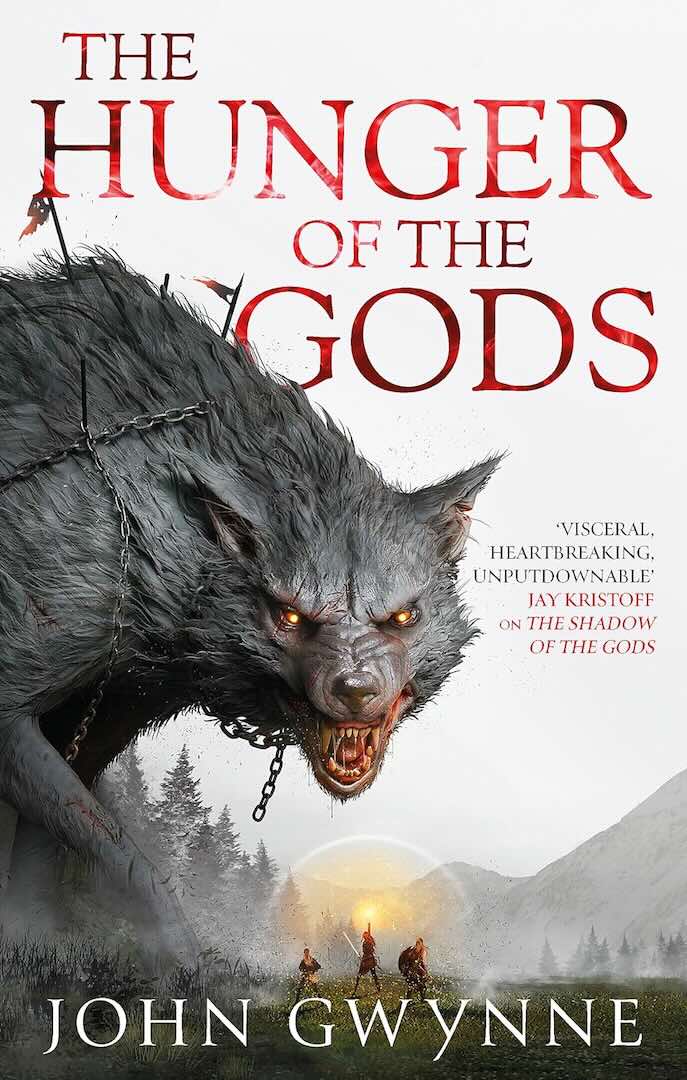In a world where myths breathe and ancient powers stir beneath the earth, John Gwynne’s The Hunger of the Gods emerges as a thunderous continuation of the Bloodsworn Saga. Like the intricate knotwork adorning Viking weaponry, this second installment weaves together multiple narratives into a tapestry of vengeance, loyalty, and resurrection that will leave readers breathless.
The Saga Continues: Setting the Stage
Following the events of The Shadow of the Gods, this middle volume of the trilogy plunges us deeper into a richly realized world inspired by Norse mythology. The story picks up in the immediate aftermath of Lik-Rifa’s dramatic liberation from her ancient prison beneath Oskutreð, the great ash tree. The dragon god’s freedom sets in motion a cascade of events that will reshape the foundations of Vigrið.
Plot and Narrative Structure
Multiple Perspectives, One Epic Tale
The narrative unfolds through several interweaving perspectives:
- Orka Skullsplitter: A mother’s relentless quest to rescue her kidnapped son, Breca
- Varg: A former thrall seeking vengeance for his sister’s death
- Elvar: A warrior determined to fulfill her blood oath and prove her worth
- Biórr: A complex new perspective that adds depth to the antagonists’ side
Gwynne masterfully balances these storylines, each character’s journey contributing to the larger narrative while maintaining their distinct voices and motivations.
Strengths and Achievements
World-Building Excellence
The author’s deep knowledge of Viking culture and Norse mythology shines through in every detail, from the intricate combat descriptions to the social structures and religious beliefs. The world feels lived-in and authentic, with a magic system that seamlessly blends into the fabric of society.
Character Development
The character work in The Hunger of the Gods is exceptional, particularly in how it explores the complexities of loyalty and betrayal. Standout elements include:
- Orka’s evolution from feared warrior to desperate mother
- Varg’s growing understanding of his Tainted nature
- Elvar’s journey from ambitious warrior to responsible leader
- The compelling portrayal of the antagonists, especially through Biórr’s perspective
Combat and Action
Gwynne’s expertise in historical reenactment lends unprecedented authenticity to the combat scenes. The battles are visceral, tactically sound, and emotionally impactful. Each clash of weapons feels consequential, every victory earned through skill and sacrifice.
Areas for Improvement
Pacing Challenges
While the multiple storylines are generally well-handled, there are moments where the pacing feels uneven. Some plot threads, particularly in the middle section, could have been tightened for better momentum.
Character Bloat
The expanding cast of characters, while rich and interesting, occasionally threatens to overwhelm the narrative. Some secondary characters could have been consolidated or given less prominence to maintain clearer focus on the main storylines.
Thematic Depth
The Nature of Power
The novel expertly explores the corrupting influence of power, particularly through the resurrection of ancient gods and the treatment of the Tainted. The parallel between human oppression and divine tyranny adds layers of complexity to the narrative.
Family and Loyalty
At its heart, the story examines the bonds that define us—whether blood, oath, or choice. The various interpretations of loyalty across different characters provide rich material for reflection.
Writing Style and Craft
Gwynne’s prose strikes an excellent balance between accessibility and poetic power. His writing is:
- Clear and direct when describing action
- Lyrical when painting landscapes or emotional moments
- Rich with period-appropriate terminology without becoming obtuse
Series Context
The Hunger of the Gods builds successfully on the foundation laid in The Shadow of the Gods while setting up intriguing possibilities for the trilogy’s conclusion in The Fury of the Gods. The escalation of stakes feels natural and earned.
Impact and Significance
In the landscape of modern fantasy, the Bloodsworn Saga stands out for its:
- Authentic representation of Norse culture and mythology
- Complex exploration of morality and power
- Strong character work
- Masterful action sequences
Similar Works and Recommendations
Readers who enjoy this series might also appreciate:
- Joe Abercrombie’s First Law series
- Bernard Cornwell’s Saxon Stories
- Robert Low’s Oathsworn series
Verdict
While not without minor flaws, it represents epic fantasy at its best—ambitious, emotionally resonant, and thoroughly engrossing. The novel successfully avoids middle-book syndrome by delivering both satisfying character development and thrilling action while setting up an explosive conclusion.
Final Thoughts
Gwynne has crafted a worthy continuation of his saga that will leave readers eagerly anticipating the final installment. The blend of historical authenticity, compelling characters, and mythological depth creates a reading experience that lingers long after the final page.
Whether you’re a fan of Norse mythology, character-driven fantasy, or simply exceptional storytelling, The Hunger of the Gods delivers a remarkable adventure that honors its inspirations while forging its own path through the nine worlds of fantasy literature.





